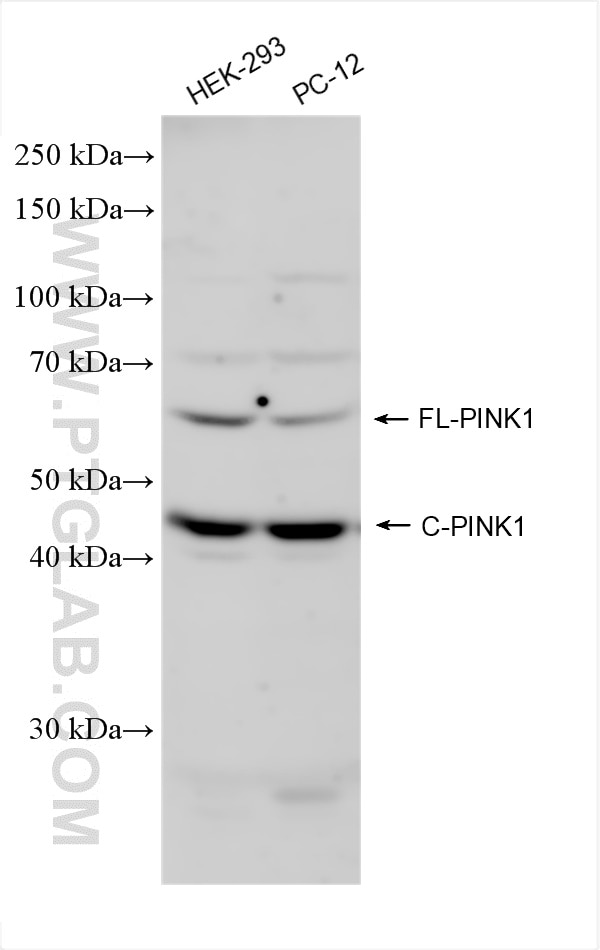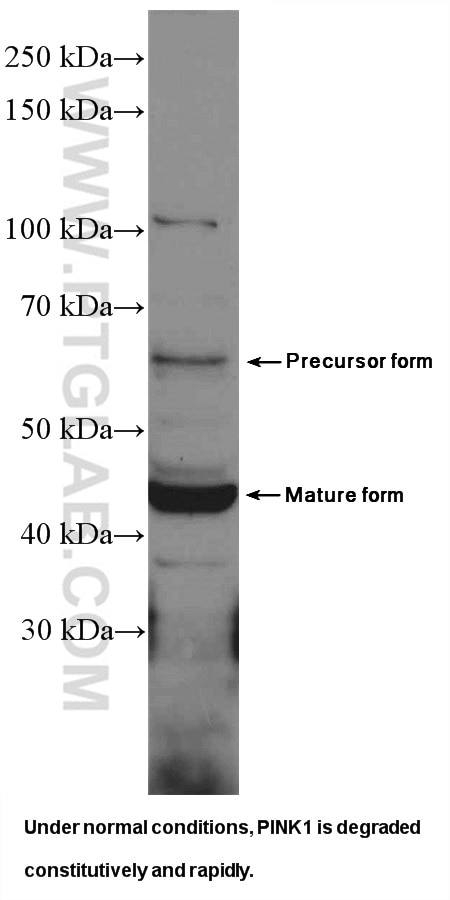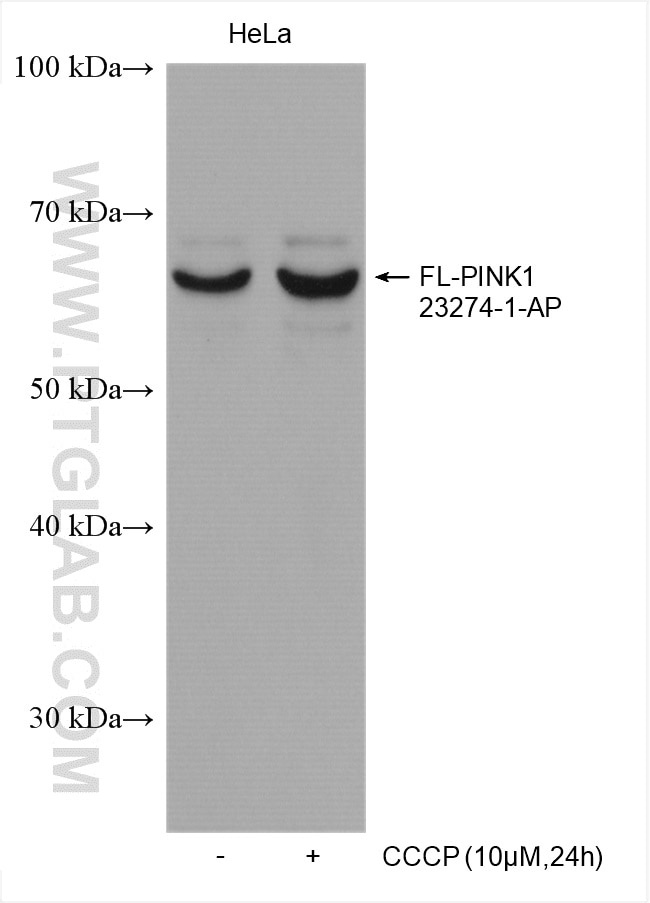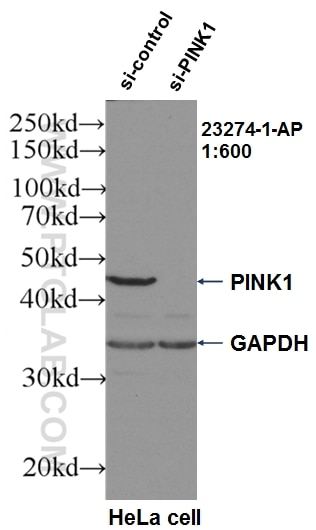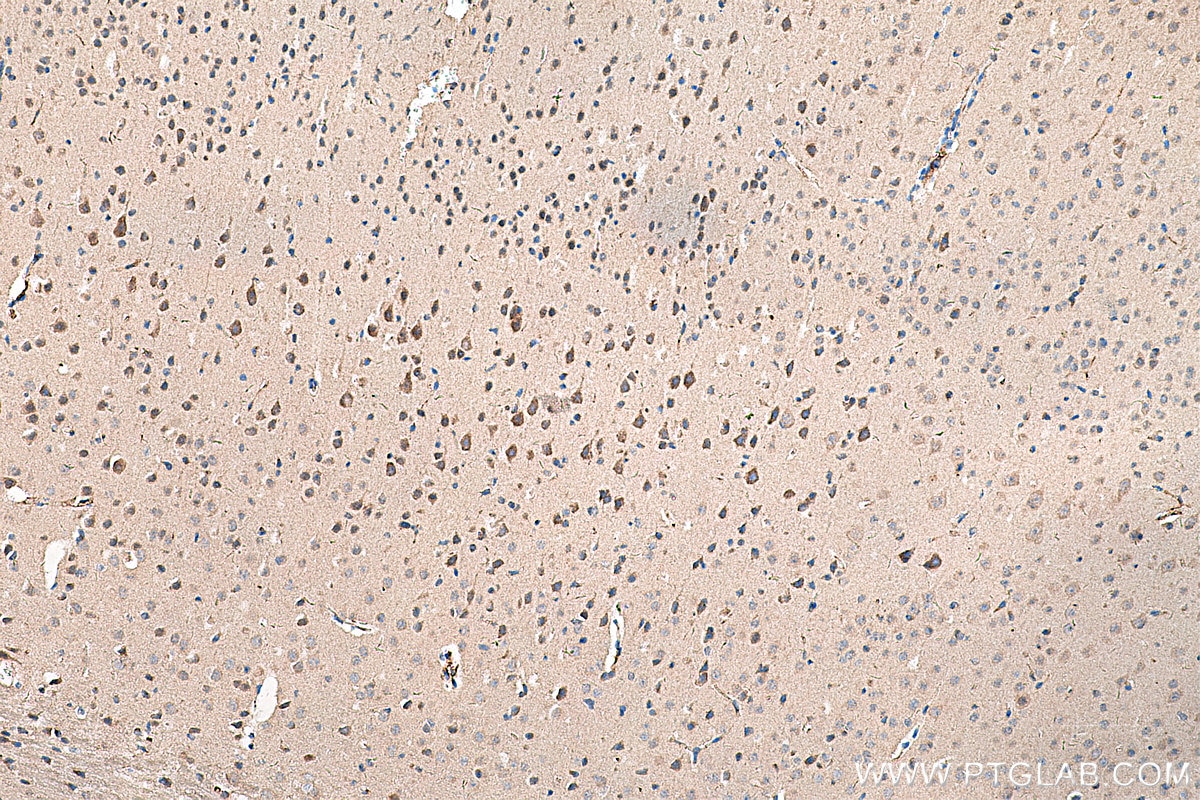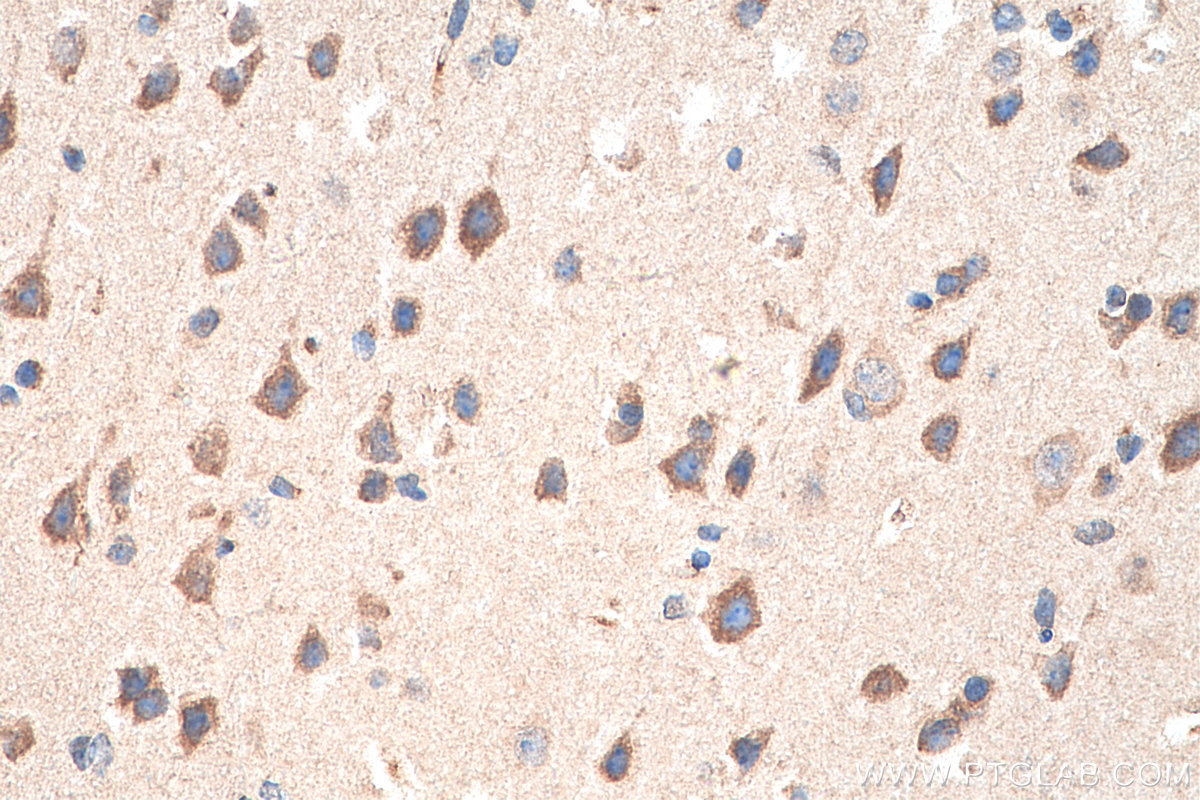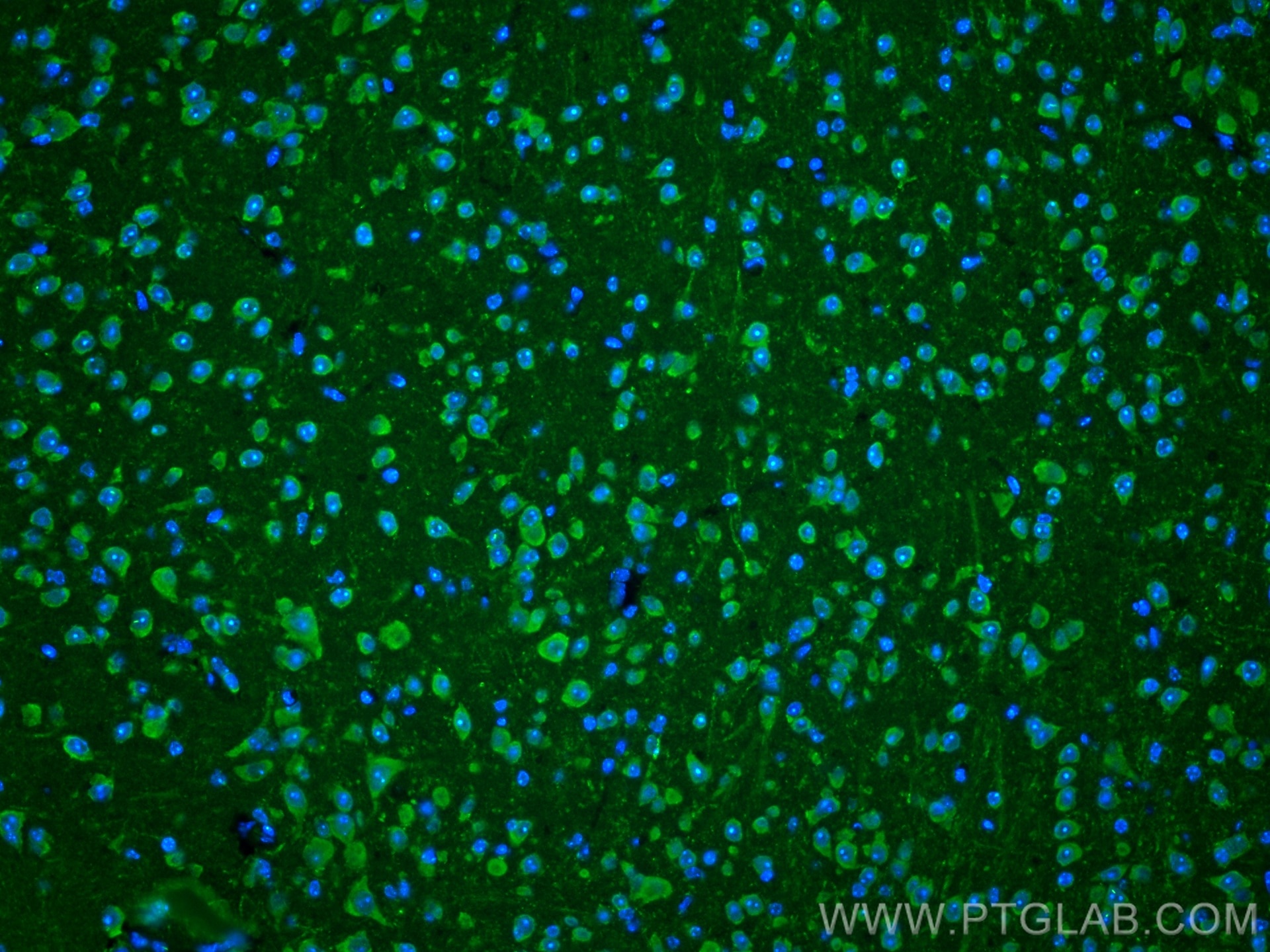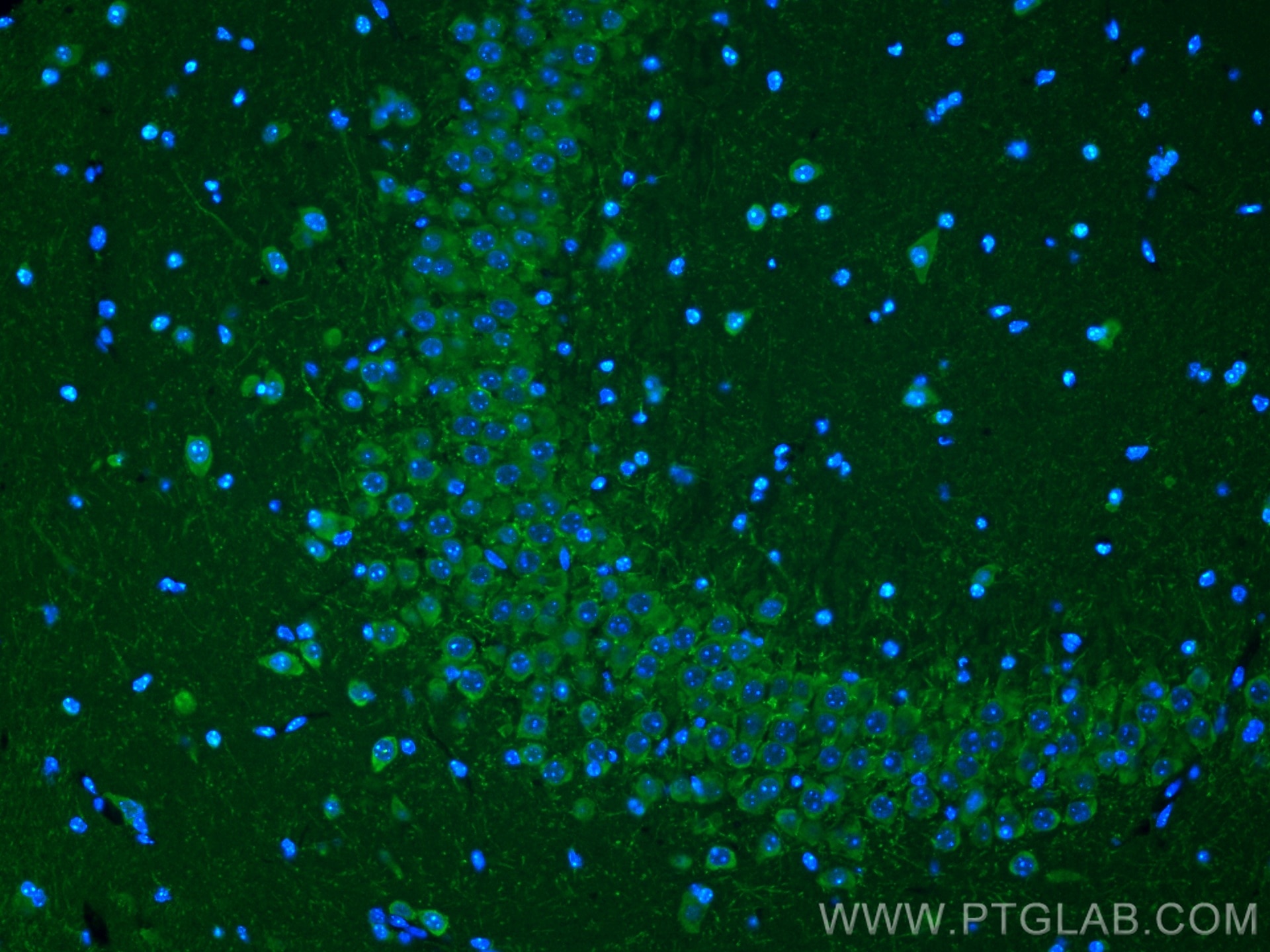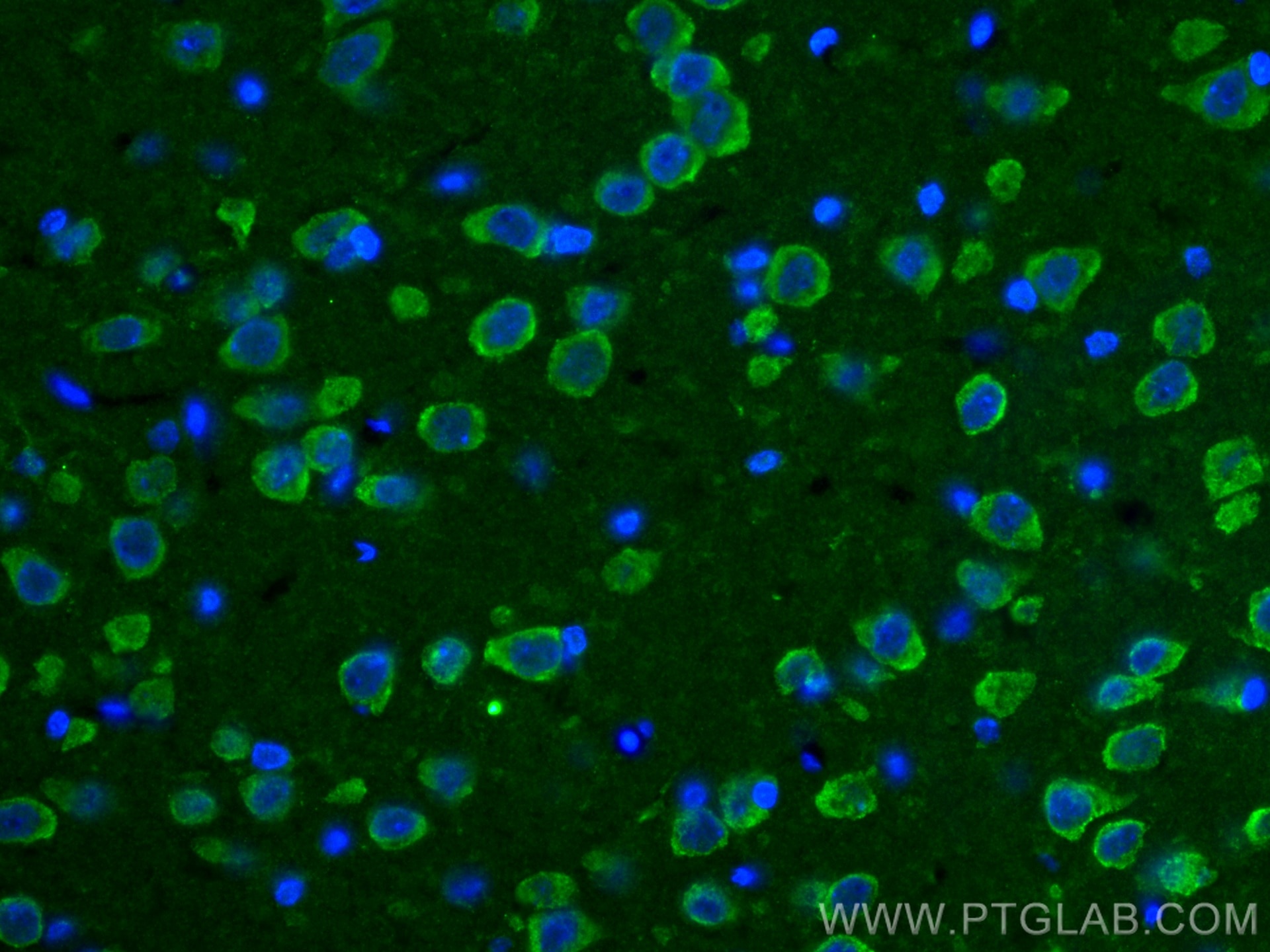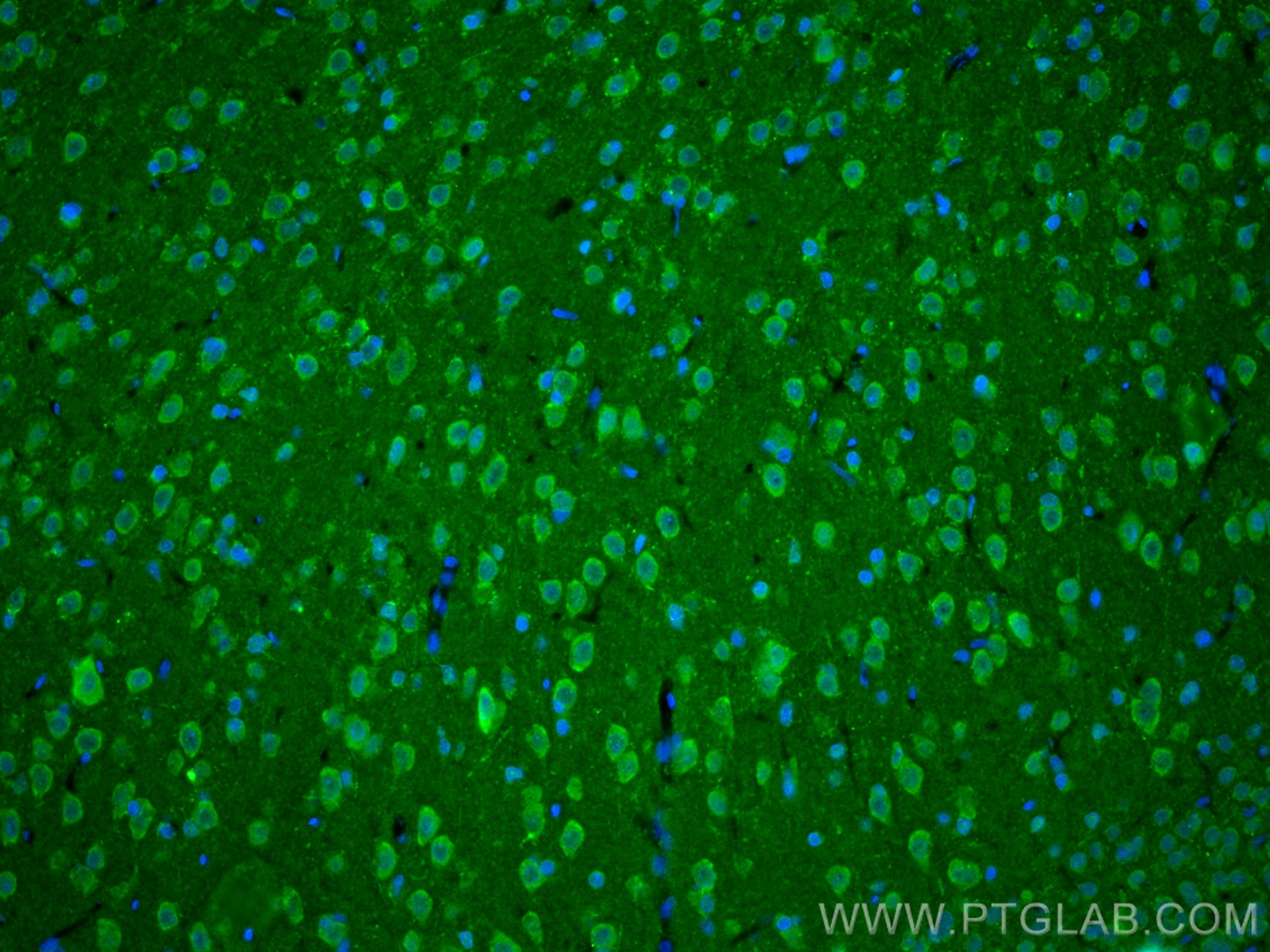- Featured Product
- KD/KO Validated
PINK1 Polyklonaler Antikörper
PINK1 Polyklonal Antikörper für WB, IHC, IF-P, ELISA
Wirt / Isotyp
Kaninchen / IgG
Getestete Reaktivität
human, Maus, Ratte und mehr (6)
Anwendung
WB, IHC, IF-P, IP, CoIP, ChIP, ELISA
Konjugation
Unkonjugiert
Kat-Nr. : 23274-1-AP
Synonyme
Geprüfte Anwendungen
| Erfolgreiche Detektion in WB | HEK-293-Zellen, HeLa-Zellen, PC-12-Zellen |
| Erfolgreiche Detektion in IHC | Maushirngewebe Hinweis: Antigendemaskierung mit TE-Puffer pH 9,0 empfohlen. (*) Wahlweise kann die Antigendemaskierung auch mit Citratpuffer pH 6,0 erfolgen. |
| Erfolgreiche Detektion in IF-P | Maushirngewebe, Rattenhirngewebe |
Empfohlene Verdünnung
| Anwendung | Verdünnung |
|---|---|
| Western Blot (WB) | WB : 1:1000-1:4000 |
| Immunhistochemie (IHC) | IHC : 1:1000-1:4000 |
| Immunfluoreszenz (IF)-P | IF-P : 1:200-1:800 |
| It is recommended that this reagent should be titrated in each testing system to obtain optimal results. | |
| Sample-dependent, check data in validation data gallery | |
Veröffentlichte Anwendungen
| KD/KO | See 20 publications below |
| WB | See 418 publications below |
| IHC | See 45 publications below |
| IF | See 81 publications below |
| IP | See 4 publications below |
| CoIP | See 5 publications below |
| ChIP | See 1 publications below |
Produktinformation
23274-1-AP bindet in WB, IHC, IF-P, IP, CoIP, ChIP, ELISA PINK1 und zeigt Reaktivität mit human, Maus, Ratten
| Getestete Reaktivität | human, Maus, Ratte |
| In Publikationen genannte Reaktivität | human, Affe, Ente, Hausschwein, Kaninchen, Maus, Ratte, Zebrafisch, Ziege |
| Wirt / Isotyp | Kaninchen / IgG |
| Klonalität | Polyklonal |
| Typ | Antikörper |
| Immunogen | PINK1 fusion protein Ag19825 |
| Vollständiger Name | PTEN induced putative kinase 1 |
| Berechnetes Molekulargewicht | 581 aa, 63 kDa |
| Beobachtetes Molekulargewicht | 65 kDa, 45 kDa |
| GenBank-Zugangsnummer | BC028215 |
| Gene symbol | PINK1 |
| Gene ID (NCBI) | 65018 |
| Konjugation | Unkonjugiert |
| Form | Liquid |
| Reinigungsmethode | Antigen-affinitätsgereinigt |
| Lagerungspuffer | PBS with 0.02% sodium azide and 50% glycerol |
| Lagerungsbedingungen | Bei -20°C lagern. Nach dem Versand ein Jahr lang stabil Aliquotieren ist bei -20oC Lagerung nicht notwendig. 20ul Größen enthalten 0,1% BSA. |
Hintergrundinformationen
PINK1 is a mitochondrial serine/threonine-protein kinase that protects cells from stress-induced mitochondrial dysfunction. The precursor of PINK1 (65 kDa) is synthesized in the cytosol and is imported into the outer membrane of mitochondria. PINK1 is further transferred into the inner membrane. The full-length PINK1 can be proteolytically processed into 52-55 kDa and 45-46 kDa forms (PMID: 18221368; 25108683; 18031932). The half-life of the mature form of PINK1 is very short and it was proposed that the proteasome is involved in its degradation (PMID: 23472196). The gene of PINK1 maps to chromosome 1p36.12. Two alternatively spliced variants exist, the shorter isoform (30 kDa) produced by alternative splicing. Mutations in the PINK1 gene cause autosomal recessive early-onset Parkinson's disease.
Protokolle
| PRODUKTSPEZIFISCHE PROTOKOLLE | |
|---|---|
| WB protocol for PINK1 antibody 23274-1-AP | Protokoll herunterladen |
| IHC protocol for PINK1 antibody 23274-1-AP | Protokoll herunterladenl |
| IF protocol for PINK1 antibody 23274-1-AP | Protokoll herunterladen |
| STANDARD-PROTOKOLLE | |
|---|---|
| Klicken Sie hier, um unsere Standardprotokolle anzuzeigen |
Publikationen
| Species | Application | Title |
|---|---|---|
Nat Cell Biol Ammonia-induced lysosomal and mitochondrial damage causes cell death of effector CD8+ T cells | ||
Adv Sci (Weinh) WAC Facilitates Mitophagy-mediated MSC Osteogenesis and New Bone Formation via Protecting PINK1 from Ubiquitination-Dependent Degradation | ||
J Hazard Mater Low-dose deoxynivalenol exposure inhibits hepatic mitophagy and hesperidin reverses this phenomenon by activating SIRT1 | ||
Nat Commun Disuse-associated loss of the protease LONP1 in muscle impairs mitochondrial function and causes reduced skeletal muscle mass and strength. |
Rezensionen
The reviews below have been submitted by verified Proteintech customers who received an incentive for providing their feedback.
FH Javier (Verified Customer) (09-09-2025) | Very good for Western Blotting.
|
FH aidan (Verified Customer) (04-10-2024) | Good results. Would try higher dilution next time (1:500) on precast gel. Used handcast gel overnight incubation at 4 degrees. Blocked 1 hr 5% milk
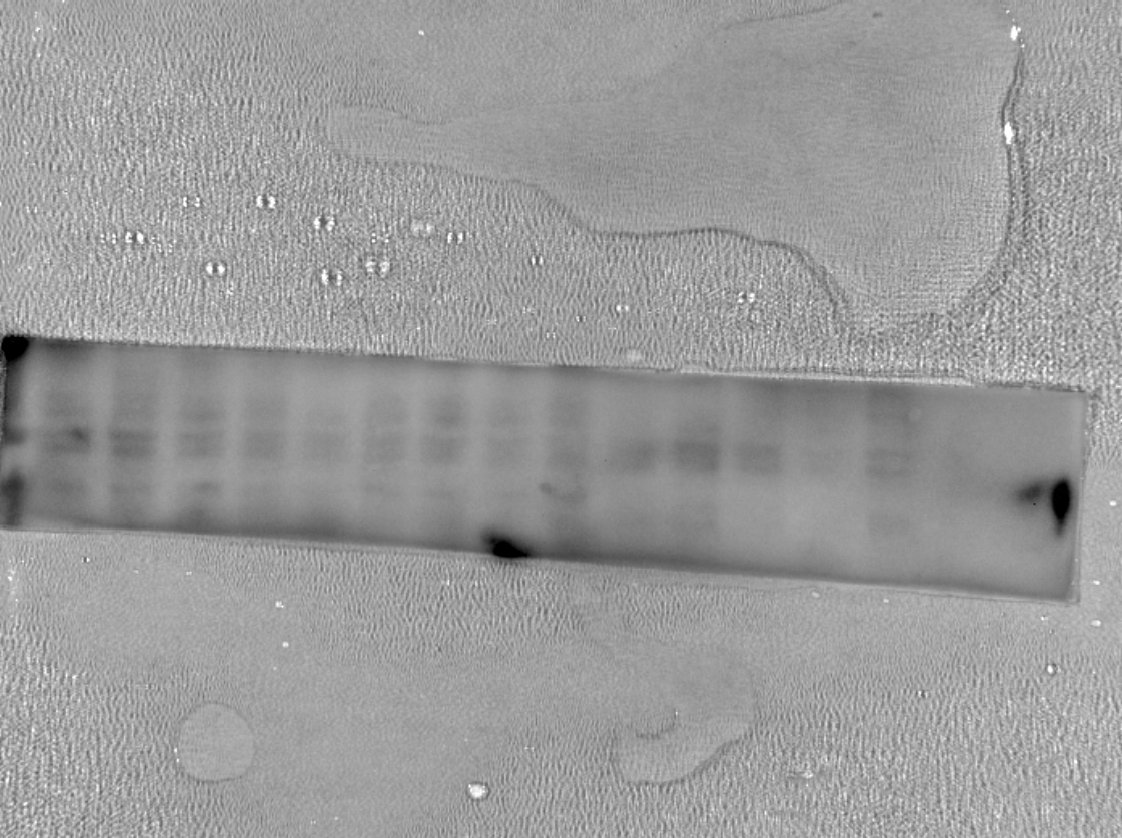 |
FH Nin (Verified Customer) (02-27-2023) | It is okay to probe PINK1 with two bands although there are some weak non-specific bands.
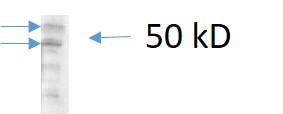 |
FH Yahir Alberto (Verified Customer) (11-12-2021) | The antibody works fine with overnight incubation at 4 °C.
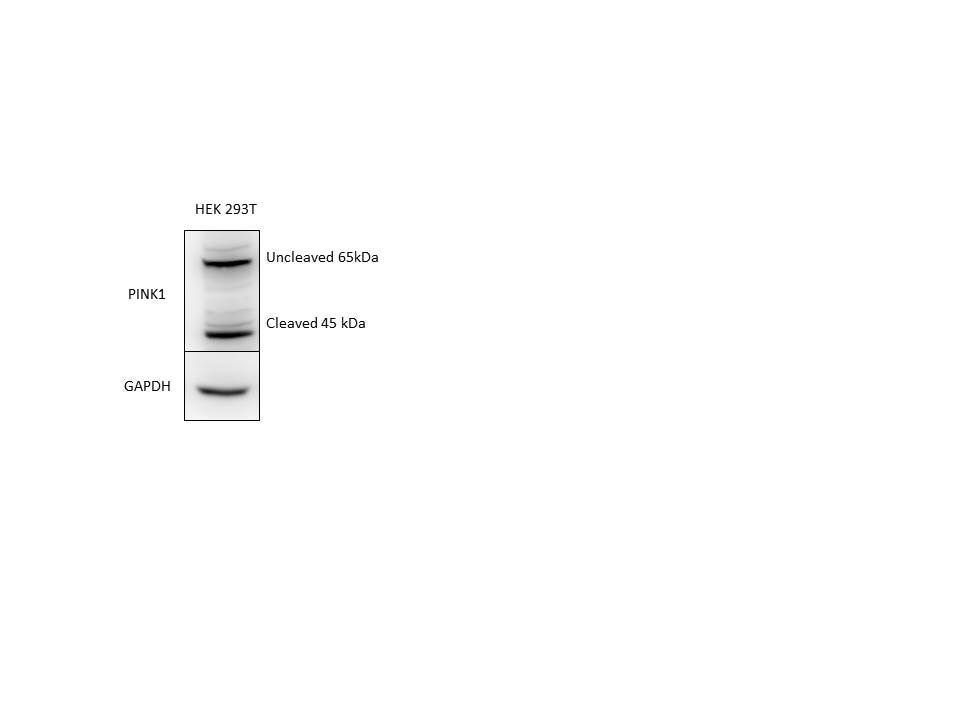 |
FH Tanusree (Verified Customer) (12-03-2019) | This antibody works good in western blotting analysis using mouse tissues.
|
FH HONGXUE (Verified Customer) (08-19-2019) | The specific is not good. You can detect many bands using WB.
 |
